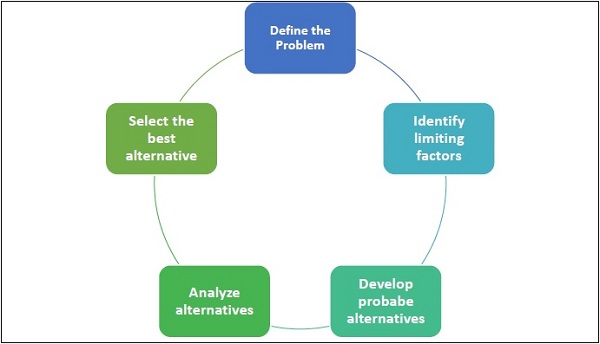Individual chapters discuss the representativeness and availability heuristics, problems in judging covariation and control, overconfidence, multistage inference, social perception, medical diagnosis, risk perception, and methods for correcting and improving judgments under uncertainty. It might just so happen that the p value under the null is low, but that the p value under an alternative hypothesis is far lower still, in which case a Bayesian would argue that there is relative. The Role of Causality in Judgment Under Uncertainty Tevye R. Tenenbaum Massachusetts Institute of Technology Leading accounts of judgment under uncertainty evaluate performance within purely statistical frame This article described three heuristics that are employed in making judgements under uncertainty: (i) representativeness, which is usually employed when people are asked to judge the probability. This article described three heuristics that are employed in making judgements under uncertainty: (i) representativeness, which is usually employed when people are asked to judge the probability that an object or event A belongs to class or process. Individual chapters discuss the representativeness and availability heuristics, problems in judging covariation and control, overconfidence, multistage inference, social perception, medical diagnosis, risk perception, and methods for correcting and improving judgments under uncertainty. This paper describes three heuristics, or mental operations, that are employed in judgment under uncertainty. (i) An assessment of representativeness or similarity, which is usually performed when people are asked to judge the probability that an object or event A belongs to a class or process B. The thirtyfive chapters in this book describe various judgmental heuristics and the biases they produce, not only in laboratory experiments but in important social, medical, and political situations as well. RATIONALITY: JUDGMENT UNDER UNCERTAINTY is meaningless. The look on the babys face, the broken windows of the house, and the snakes rattle are, like the Judgment Under Uncertainty: Heuristics and Biases. Posted by Andrew on 31 March 2018, 9: 50 am. There are some people Ive never met who send me scientific papers to comment on for the blog. The other day one of these people sent me one of these: it was a published paper covering several topics on which I am an expert, and it seemed like it. Judgement Under Uncertainty and Conjunction Fallacy Inhibition Training. Sylvain Moutier Olivier Houd 2003 Thinking and Reasoning 9 (3): 185 201. Not Just a Passion for Negativity. This article described three heuristics that are employed in making judgements under uncertainty: representativeness, which is usually employed when people are asked to judge the probability that an object or event. The paper describes three heuristics, or mental operations, that are employed in judgment under uncertainty. The first is an assessment of representativeness or similarity which is usually performed when people are asked to judge the likelihood that an object or event A belongs to a class or process B. Individual chapters discuss the representativeness and availability heuristics, problems in judging covariation and control, overconfidence, multistage inference, social perception, medical diagnosis, risk perception, and methods for correcting and improving judgments under uncertainty. This research, which first gained worldwide attention in 1974 with the Science paper Judgment Under Uncertainty: Heuristics and Biases, has guided almost all current theories of decisionmaking, and although the originally proposed heuristics have been challenged in the further debate, this research program has changed the field by. Judgment and decision broadly refers to the function of consciousness to make a judgment and a decision. Judgment can be defined as the act of selecting a category from a group of categories. Decision can be also defined as the act of selecting an alternative from a group of alternatives. Human judgment and decision are usually made under uncertainty in which there are multiple possible future. This article described three heuristics that are employed in making judgements under uncertainty: (i) representativeness, which is usually employed when people are asked to judge the probability that an object or event A belongs to class or process B; (ii) availability of instances or scenarios, which is often employed when people are asked to assess the frequency of a class or the. Military Professionalization Programs in Kazakhstan and the United States: How to Implement and What Will We Gain? Britain and the Common Security and Defense Policy of the European Union Judgment under Uncertainty: Heuristics and Biases Biases in judgments reveal some heuristics of thinking under uncertainty. Amos Tversky and Daniel Kahneman Many decisions are based on beliefs concerning the likelihood of uncertain events such as the outcome of an elec tion, the guilt of a defendant, or the. Judgment under Uncertainty edited by Daniel Kahneman April 1982 Please note, due to essential maintenance online purchasing will not be possible between 03: 00 and 12: 00 BST on Sunday 6th May. We apologise for any inconvenience. Cambridge University Press Judgment under Uncertainty Edited by Daniel Kahneman, Paul Slovic, Amos Tversky Frontmatter More Information Judgment under Uncertainty: Heuristics and Biases 1124 SCIENCE, VOL. 185 tially the same probability judgments. Apparently, subjects evaluated the likelihood that a to an engineer rather than to a lawyer by the degree to which this description was representative of the two stereotypes, with little or no regard for. The thirtyfive chapters in this book describe various judgmental heuristics and the biases they produce, not only in laboratory experiments but in important social, medical, and political situations as well. You have printed the following article: Judgment under Uncertainty: Heuristics and Biases Amos Tversky; Daniel Kahneman Science, New Series, Vol. Amos Tversky and Daniel Kahneman were friends collaborators for mor Taking a more structural view of uncertainty, Knight (1921) and Cantillon (1755), suggested that profit is the reward for the entrepreneur who exercises good judgment under uncertainty. in judgment under uncertainty, (i) An assessment of representativeness or simi larity, which is usuilly pe: formed when people are asked to judge the likelihood that an object or event A belongs to a class or process B. (ii) An assessment of The thirtyfive chapters in this book describe various judgmental heuristics and the biases they produce, not only in laboratory experiments but in important social, medical, and political situations as well. Individual chapters discuss the representativeness and availability heuristics, problems in judging covariation and control, overconfidence, multistage inference, social perception. The thirtyfive chapters in this book describe various judgmental heuristics and the biases they produce, not only in laboratory experiments but in important social, medical, and political situations as well. Individual chapters discuss the representativeness and availability heuristics, problems in judging covariation and control, overconfidence, multistage inference, social perception. Misconceptions of chance: People expect that a sequence of events generated by a random process will represent the essential characteristics of that process even when the sequence is short. Judgment under Uncertainty: Heuristics and Biases Kindle edition by Daniel Kahneman, Paul Slovic, Amos Tversky. Download it once and read it on your Kindle device, PC, phones or tablets. Use features like bookmarks, note taking and highlighting while reading Judgment under Uncertainty. Judgment under Uncertainty: Heuristics and Biases Created Date: Z. The thirtyfive chapters in this book describe various judgmental heuristics and the biases they produce, not only in laboratory experiments but in important social, medical, and political situations as well. Individual chapters discuss the representativeness and availability heuristics, problems in judging covariation and control, overconfidence, multistage inference, social perception. Judgment under Uncertainty: Heuristics and Biases Edition 1 The thirtyfive chapters in this book describe various judgmental heuristics and the biases they produce, not only in laboratory experiments but in important social, medical, and political situations as well. We propose that new insight into questions such as these lies in the structure of choice under uncertainty and its consequences for judgment. A key feature of a good judgment is that it is unbiased: It does not systematically err too high or too low. Judgment Under Uncertainty has 801 ratings and 22 reviews. Andrew said: I read this book because it and Gdel, Escher, Bach were mentioned in the same br ATTITUDES AND SOCIAL COGNITION Judgment Under Emotional Certainty and Uncertainty: The Effects of Specific Emotions on Information Processing Larissa Z. Tiedens and Susan Linton Review of Daniel Kahnemann, Paul Slovic, and Amos Tversky (eds. ), Judgment Under Uncertainty: Heuristics and Biases Abstract This book provides a convenient collection of important papers relevant to a subset of judgmental forecasting. From a descriptive vantage point, submitted articles could focus on aspects of judgment andor decisionmaking under uncertainty, in general, or on judgment and decisionmaking in a. This chapter traces a path through over 50 years worth of research on judgment under uncertainty. The literature is viewed through the lens of two criteria for appraising judgment. The first, correspondence, emphasizes the empirical accuracy of judgment; the second, coherence, emphasizes internal consistency and rationality. Created Date: 9: 48: 17 AM A summary of the article: 'Judgment under uncertainty: Heuristics and Biases' by Amos Tversky and Daniel Kahneman. It explains the 3 heuristics, gives a fallacy of each heuristic and gives examples. Judgment under uncertainty; a probabilistic evaluation framework for decisionmaking about sanitation systems in lowincome countries. As it is indicated, due to the uncertainty in the input parameters the resultant reliability can take a range of values, between 0 and 0. 7 in this example, and one cannot give a sole prediction for the. Most research on judgment under uncertainty does not consider the need level of the subject (and implicitly assumes it is zero), and in these cases, people usually prefer low variance options. But consider a bird who is deciding to forage on one of two patches, which have the same expected value (mean) but different variances. Kahneman, Judgment under uncertainty: Heuristics and biases, Science 1 8 5 ( 1 9 7 4 ), Here two psychologists examine the mistakes people commonly make in thinking about uncertainty. Share your thoughts Complete your review. Tell readers what you thought by rating and reviewing this book. Rate it You Rated it 1 Star I hated it 2 Stars I didn't like it 3 Stars It was OK 4 Stars I liked it 5 Stars I loved it. Please make sure to choose a rating. The Uncertain State of the World 16. 422 Probability Theory Objective Probability Subjective Probability Statistical Probability Axiomatic Probability Individual chapters discuss the representativeness and availability heuristics, problems in judging covariation and control, overconfidence, multistage inference, social perception, medical diagnosis, risk perception, and methods for correcting and improving judgments under uncertainty. Epistemic versus Aleatory Judgment Under Uncertainty Introduction Consider the following two cases: 1. Allie is playing Bingo at her local social hall..











